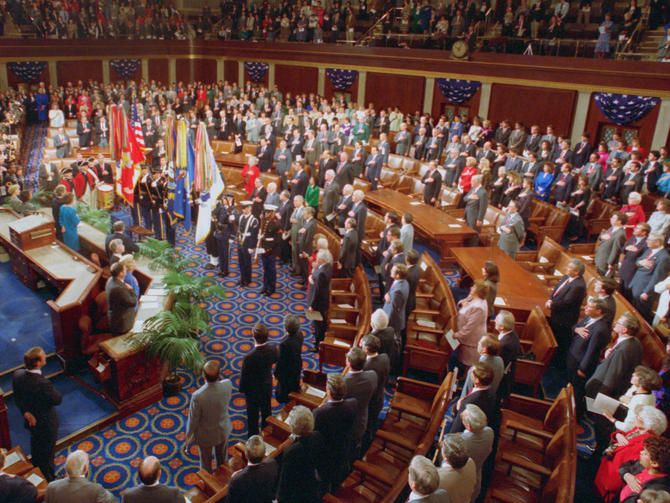Congress is expected to pass a permanent ban that will prevent local governments from taxing Internet access, a big win for consumers that ensures your broadband bill won’t ever look like your wireless bill.


Congress is expected to pass a permanent ban that will prevent local governments from taxing Internet access, a big win for consumers that ensures your broadband bill won’t ever look like your wireless bill.

Two separate teams of physicists working with the Large Hadron Collider in Switzerland have identified signs of a new fundamental particle of nature. While hypotheses abound as to what exactly this particle could be — if it exists at all — the most popular opinion seems to be that it’s a heavier version of the Higgs boson, the particle that explains why other particles have mass.
“I don’t think there is anyone around who thinks this is conclusive,” one of the researchers, Kyle Cranmer from New York University, told The New York Times. “But it would be huge if true.”
After a hiatus of more than two years, the LHC was fired up again in June to continue smashing particles together — this time at record-breaking energy levels of around 13 trillion electron volts. (In case you’re wondering, an electron volt is a unit of energy equal to approximately 1.602×10-19 joules, and 6.5 trillion electron volts is twice the energy level used to detect the Higgs boson for the first time in 2012.)

The news this month is full of stories about money pouring into AI research. First we got the news about the $15 million granted to the new Leverhulme Center for the Future of Intelligence. Then Elon Musk and friends dropped the news about launching OpenAI to the tune of $1 billion, promising that this would be a not-for-profit company committed to safe AI and improving the world. But that all pales in comparison to the $12-$15 billion that the Pentagon is requesting for the development of AI weapons.
According to Reuters, “The Pentagon’s fiscal 2017 budget request will include $12 billion to $15 billion to fund war gaming, experimentation and the demonstration of new technologies aimed at ensuring a continued military edge over China and Russia.” The military is looking to develop more advanced weapons technologies that will include autonomous weapons and deep learning machines.
While the research itself would be strictly classified, the military wants to ensure that countries like China and Russia know this advanced weapons research is taking place.
Imagine having a sunny dry deck that descends to become a relaxing in-ground pool at the push of a button. The engineers at Agor Creative Engineering specialize in just such an experience. The movable pool floor can submerge below water, or rise above it to become a sturdy deck. By covering the pool when not in use, it improves pool safety, protecting children and pets from falling in.
Produced by Rob Ludacer
Follow TI: On Facebook

Over the past one year, you must have realized big brands have been creating virtual reality headsets, 360-degree content or building a VR camera.
ASCB’s Celldance Studios released Monday (Dec. 14) three new short videos made by cell scientists, featuring dramatic live cell imaging.
The videos, which take advantage of accelerating advances in super-resolution imaging, fluorescent tagging, and Big Data manipulation, where made in the labs of Douglas Robinson at John Hopkins University, John Condeelis at Albert Einstein College of Medicine, and Satyajit Mayor at the National Centre for the Biological Sciences (NCBS) in India.
The videos were announced at the 2015 American Society for Cell Biology annual meeting.

There’s lots of interesting research – involving things like mushrooms, aluminium, and hydrogen – looking to find the next generation of energy technology that will replace our current lithium-ion batteries, but what if you don’t want to wait for the future to arrive?
Well, how about we just insert a mega-big-ass battery into your next phone and see how that goes? That’s the exact thinking behind the new K10000 smartphone from Chinese tech company Oukitel. This model crams in a gigantic 10,000 mAh (milliampere-hour) battery that’s billed to last between 10 and 15 days in regular use.
Compared to the ho-hum daily/nightly charge routine most of us are used to with our current phones, the K10000’s sensational longevity gives it quite the unique selling point.

Several European countries are moving to adopt universal basic income schemes in the next few years. If any of them come to fruition we could finally get an answer to one of the most exciting questions in economics: whether basic income is the best way to end poverty and the welfare state:

A researcher at Singapore’s Nanyang Technological University (NTU) has developed a new technology that provides real-time detection, analysis, and optimization data that could potentially save a company 10 percent on its energy bill and lessen its carbon footprint. The technology is an algorithm that primarily relies on data from ubiquitous devices to better analyze energy use. The software uses data from computers, servers, air conditioners, and industrial machinery to monitor temperature, data traffic and the computer processing workload. Data from these already-present appliances are then combined with the information from externally placed sensors that primarily monitor ambient temperature to analyze energy consumption and then provide a more efficient way to save energy and cost.
The energy-saving computer algorithm was developed by NTU’s Wen Yonggang, an assistant professor at the School of Computer Engineering’s Division of Networks & Distributed Systems. Wen specializes in machine-to-machine communication and computer networking, including looking at social media networks, cloud-computing platforms, and big data systems.
Most data centers consume huge amount of electrical power, leading to high levels of energy waste, according to Wen’s website. Part of his research involves finding ways to reduce energy waste and stabilize power systems by scaling energy levels temporally and spatially.